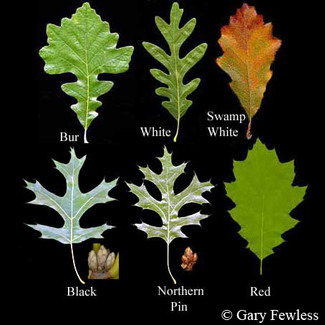An oak tree is one of the most common species of trees in North America. Oak trees come in two major prototypes - red oak trees and white oak trees. Some oak trees have leaves that stay on the tree year-round (evergreen), while others have leaves that drop during dormancy (deciduous). Furthermore, All oaks belong to the beech tree family.
The term oak can be used as part of the common name of any of about 400 species of oak trees and shrubs in the genus Quercus.
Oaks have spirally arranged leaves, with a lobed margin in many species; some have serrated leaves or entire leaves with a smooth margin.
The term oak can be used as part of the common name of any of about 400 species of oak trees and shrubs in the genus Quercus.
Oaks have spirally arranged leaves, with a lobed margin in many species; some have serrated leaves or entire leaves with a smooth margin.
The flowers are catkins, produced in spring. The fruit is a nut called an acorn. Each acorn contains one seed (rarely two or three) and takes 6-18 months to mature, depending on species.
Click the links below to learn more about species of oak trees found at Lacawac Sanctuary.
Click the links below to learn more about species of oak trees found at Lacawac Sanctuary.
Location |
|
